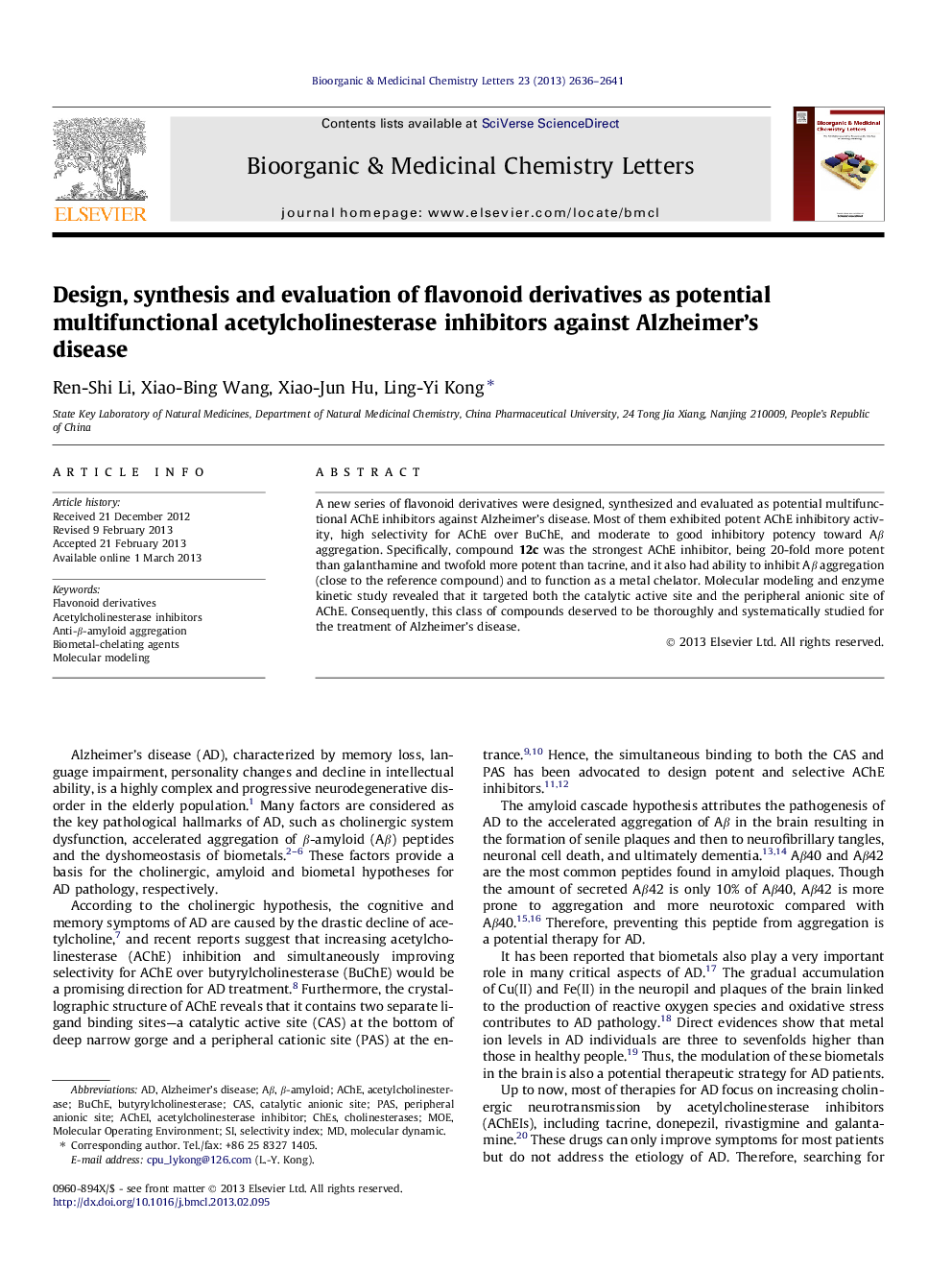| Article ID | Journal | Published Year | Pages | File Type |
|---|---|---|---|---|
| 10591939 | Bioorganic & Medicinal Chemistry Letters | 2013 | 6 Pages |
Abstract
A new series of flavonoid derivatives were designed, synthesized and evaluated as potential multifunctional AChE inhibitors against Alzheimer's disease. Most of them exhibited potent AChE inhibitory activity, high selectivity for AChE over BuChE, and moderate to good inhibitory potency toward Aβ aggregation. Specifically, compound 12c was the strongest AChE inhibitor, being 20-fold more potent than galanthamine and twofold more potent than tacrine, and it also had ability to inhibit Aβ aggregation (close to the reference compound) and to function as a metal chelator. Molecular modeling and enzyme kinetic study revealed that it targeted both the catalytic active site and the peripheral anionic site of AChE. Consequently, this class of compounds deserved to be thoroughly and systematically studied for the treatment of Alzheimer's disease.
Keywords
AβCASBuChEbutyrylcholinesteraseCHESβ-AmyloidAChEIAChEAcetylcholinesteraseAlzheimer’s diseasePeripheral anionic sitecatalytic anionic siteselectivity indexMolecular Operating EnvironmentMolecular modelingFlavonoid derivativesacetylcholinesterase inhibitoracetylcholinesterase inhibitorsPASMOEMolecular dynamicCholinesterases
Related Topics
Physical Sciences and Engineering
Chemistry
Organic Chemistry
Authors
Ren-Shi Li, Xiao-Bing Wang, Xiao-Jun Hu, Ling-Yi Kong,
